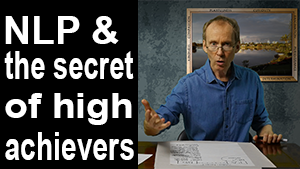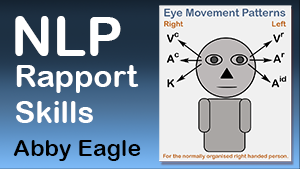
NLP tools and techniques. NLP communication model. The power of Neuro Linguistic Programming. Learn to use NLP for transformational change. Phone 07 5562 5718 or send an email to book a free 20 minute telephone or Skype session with Abby Eagle. NLP Coaching, Hypnotherapy and Meditation. Gold Coast, Robina, Australia. Online NLP Coaching sessions on Skype and by telephone also available.
NLP & How These Tiny Words Could Transform Your Life & Give You Enormous Power
The Power of NLP & Spatial Prepositions
Click the Image to Watch on YouTube
In this article I am going to show you how to use spatial prepositions to help keep yourself in sensory experience so that you can gather high quality information and stop yourself from being manipulated by another person’s antics. For example, politicians seem to love using emotionally charged situations as a way to manipulate people but have you ever stopped to ask yourself questions like, “Where are they coming from? What is underneath this? Who or what is behind this?” You might assume the speaker has a positive intent or a negative intent but you can only really be sure by asking questions that help you map out the ‘situation’.
You can also use the spatial prepositions in a NLP Coaching or Hypnotherapy session. For example, you can drop under negative layers of mind to locate a core positive state which can then be used to heal a presenting problem. If you are a meditator then you can use spatial prepositions to explore consciousness. I created a meditation which invites you to explore what is behind you, what is above, what is to the left, what is to the right, what is in front, what is below and what is above. If you are interested it is called the Vastness Meditation and it is part of my meditation package available on my website.
So in this article I am going to give you a basic idea of how spatial prepositions work so that you can build a framework in your mind which you can then apply to your topic of conversation.
So what are spatial prepositions? Spatial prepositions are words that refer to a spatial relationship of something to something else. So let’s say we have a car and a dog and we use spatial prepositions to look at their relationship in different ways. And as you do this exercise be sure to take note of the image that you have in mind and notice how it changes as you read the following statements.
- The dog could run by the side of the car. (A very fit and healthy dog.)
- The dog could jump over the car. (A big dog.)
- The dog could sit on top of the car. (That would be funny.)
- The dog could run under the car. (A little dog.)
- The dog could run through the car. (As long as the doors are open.)
- The dog could sit quietly in the car. (Yes, that would be nice.)
- The dog could run around inside the car. (Could drive you crazy.)
- The dog could run at the car. (Not a very good idea.)
- The dog could run across the top of the car. (Clever dog.)
- The dog could run in front of the car. (That is dangerous.)
- The dog could run behind the car. (As long as the dog is following the car that is not a bad idea.)
- The dog could run with the car. (In unison.)
- The dog is coming from behind the car. (Coming into view.)
- The dog is going to (towards) the car.
- The dog is flying above the car. (Super dog.)
- The dog is hiding below the car. (Only until the engine is started.)
Do you get the idea? In all of the above examples you should also take note of the direction the dog is coming from and to where it is going.
So spatial prepositions are little words that indicate a spatial relationship. Now in doing this exercise there is an assumption that you have a perspective. So when you ran the exercise about the dog and car what was your viewpoint? For each one you may have had a slightly different image in mind with a slightly different perspective. So in the following exercise stay mindful of your perspective. Let’s say the topic of the conversation is about John’s anger.
1. We might start by exploring what is underneath the anger. Tad James called his procedure for doing this, The Drop Down Through Technique. So we ask what is underneath the anger and the client responds, frustration. So then we ask what is underneath the frustration and the client replies, sadness. So then we ask and what is underneath the sadness and the client replies, guilt. So what you do is to keep asking the same question to map out a chain of emotional states which gives you an insight into how to clear the anger.
2. Now let’s take a look at what might be behind the anger. So looking at the problem from the front we can ask, what is behind the anger? And then once we get a response we can ask again, and what is behind that? And so on. So once again we are eliciting a chain of states, values, layers or items that are associated with each other in some linear fashion.
3. We have asked what is underneath and behind the anger, now we might try and find what is to either side of the anger. Something that may be associated with the anger or analogous to the anger. We are looking for something at the same logical level. Keep in mind that you may not be using this procedure to explore an emotion – you could be using it to explore some socio-political topic of conversation such as climate change.
4. We could also ask, and what is above the anger? This could give you some real interesting responses like, self control, humility, peace, godliness.
So for each spatial preposition you keep on asking questions to follow a chain of states, values, layers or items. As Osho says, mind is layered like an onion. You peel off one layer and you find another – and so on until you get to the core - core values, core drivers and core outcomes.
5. And then we have to ask ourselves, is there anything in front that we are not seeing – something that may be too close? So step back and get some distance away from. In terms of the anger the information we gather could be that the mother has emotionally tortured the boy relentlessly but no one seems to see that. And we may pause to wonder, are they wilfully blind?
And then drawing upon some other NLP tools you could bring in Timeline and keeping Robert Dilts, Sleight of Mouth Model (SOM) and Michael Hall’s, Mind Lines in the back of your mind you could use questions to explore the past? – the history? – the intent? – what is driving it? – and what is pushing it?
And shifting to the future you could ask, what is the possible outcome? What is the perceived benefit? What could be the consequence?
So that is it. This article has been about using spatial prepositions to help you gather high quality information to build new understandings and achieve well-formed outcomes. Please leave your comments below and feel free to join us over at the Facebook NLP Hypnotherapy Group. If you are looking for an NLP Coach then contact Abby Eagle using the contact form on this page.
Share With Friends
| DISCUSSION GROUPS | |
|---|---|
 |
|
| NLP Future Selfing | |
| NLP, Hypnotherapy & Meditation | |
| NLP Peace Mapping | |
| Facebook Discussion Group | |









